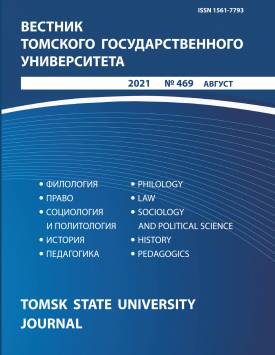Some Observations on the Structure of the Law of the Twelve Tables (Tables VIII-X)
The article discusses the problem of the structural composition of legal norms in the text of laws of the Twelve Tables. The original model of the laws of the Twelve Tables could be based on principles related to the features of the spiritual culture and socio-normative regulation characteristic of the archaic society. The traditions of the archaic sacred law determined the structure of the laws of the Twelve Tables. In the early Roman law, the activity of human society was linked to the annual calendar cycle. The Roman calendar played the role of a normative mechanism that reflected and created the cosmic order. The laws of the Twelve Tables, related to the Roman calendar, fixed this order in society. The well-known evidence from sources reveals that the First Commission of Decemvirs issued only ten tables of laws, and only later the Second Commission added two tables (Liv III.34.1). It should be noted that the number of decemvirs is equal to the number of tables. This suggests the initial orientation of the structure of laws to the 10-month (“Romulus”) year that existed in archaic Rome. If the ten tables of laws corresponded to the ten months of the “Romulus” year, the last table was Table X. Thus, the system of constructing laws should be found within the first ten tables. The norms of Table X dedicated to funeral rites (Cic. de Leg. II, 25, 64) were authentic. The study of Tables VIII, IX, and X reveals the existence of a certain relationship between them: Table X is dedicated to funeral rites; Table IX regulates the use of the death penalty; Table VIII contains a list of criminal acts with death penalty as a sanction. Thus, a certain system is viewed: VIII (act) - IX (punishment) - X (burial). It can be assumed that Table X corresponded to December, and Table IX to November. November and December marked the end of the agricultural cycle, which was characterized by the onset of cold weather and the maximum depletion of solar energy. December is a significant time of the winter solstice for all traditional cultures in Europe, with the shortest light day of the year. The time of the winter death of nature and the fading of the forces of fertility in the eyes of people of that time naturally correlated with death and burial in human society. In early Rome, the natural order was understood simultaneously as a religious, social, and legal order. Therefore, religious and legal norms regulated social relations, the division of time and space, the movement of the stars, and the change of seasons. The sources reflected the special role of pontiffs in the interpretation and, possibly, creation of laws. The traditions of the archaic sacred law determined the features of the structure of laws, in which the life of human society was linked to the annual calendar cycle, reflecting the natural/cosmic order.
Keywords
ancient Rome, Roman law, XII tabularum leges, religion, calendar, pontificesAuthors
| Name | Organization | |
| Kvashnin Vladimir A. | Vologda State University | kvashninv195@mail.ru |
References

Some Observations on the Structure of the Law of the Twelve Tables (Tables VIII-X) | Vestnik Tomskogo gosudarstvennogo universiteta – Tomsk State University Journal. 2021. № 469. DOI: 10.17223/15617793/469/18
